
Ceramic pads: pros and cons, reviews
Content
Since the creation of self-propelled vehicles, it became necessary to develop a mechanism that would allow the driver to stop the car in time. In modern transport, this is no longer a mechanism, but a whole system consisting of a large number of different elements that ensure the fastest possible reduction in the speed of a car or motorcycle.
The active and passive safety system includes many components, including the brake. Their device includes a line along which the brake fluid moves, brake cylinders (one main with a vacuum booster and one for each wheel), a disc (in budget cars, a drum type is used on the rear axle, about which you can read in detail in another review), caliper (if disc type is used) and pads.

When the vehicle slows down (engine braking is not used), the braking system is accompanied by strong heating of the pads. High friction and high temperatures lead to accelerated wear of the contact element material. Of course, this depends on the speed of the vehicle and the pressure on the brake pedal.
For these reasons, the brake pad needs to be replaced periodically. Operation of a vehicle with worn-out brake elements will sooner or later lead to an accident. Rapid wear of vehicle components, high load during emergency braking and other conditions encourage motorists to think about purchasing better brake systems. Among them is the ceramic version.
Let's consider how this system differs from the classical one, what its varieties are, and also what are the pros and cons of such a modification.
The history of ceramic brakes
The very technology of manufacturing ceramic modifications of the vehicle appeared in the American production of auto parts. Despite the fact that many European automakers are also trying to master this development, it is the American analogue that has the maximum efficiency and reliability. This braking system is gaining more and more popularity around the world. This technology is often used in the assembly of special vehicles: police cars, ambulances, fire trucks. As you can see, in some countries this technology is recognized as the best at the state level.
The first brakes were developed by engineers who made quality horse carriages. Initially, these were wooden shoes, which, with the help of a lever mechanism, were tightly pressed against the outer part of the rim. Yes, these brakes worked, but they were dangerous. The first drawback was due to the fact that the material could not withstand prolonged friction and could catch fire. The second drawback concerned the frequent replacement of worn-out shoes. Third, the cobblestone road often deforms the rim, causing the brake element to have ineffective contact with the surface, so a lot of effort was needed to slow down the traffic.

The next development, which began to be used in transport, is an elegant metal shoe with a leather lining. This element is still in contact with the outer part of the wheel. The quality of braking depended on how great the driver's effort on the lever was. But this modification also had a significant drawback: the wheel tire at the point of contact with the block wore out, which made it necessary to frequently change it. An example of such systems is the Panhard & Levassor (late 1901th century), as well as an identical XNUMX model.

One year later, the English engineer F.W. Lanchester files a patent for the first disc brake modification. Since metal was a luxury in those days (steel was mainly used for military purposes), copper was used as brake pads. Driving vehicles with such brakes was accompanied by a lot of noise, and the pads were quickly worn out due to the soft properties of copper.
In the same year, the French developer L. Renault designed a drum-type brake, inside which semicircular pads were located (for more information on how to set up such brakes, read here). When the system was activated, these elements were unclenched, resting against the side walls of the drum from the inside. Modern drum brakes work on the same principle.
In 1910, such a design was recognized as the most reliable of all available at that time (in addition to those listed above, band brakes were also tested, which were installed both on horse-drawn carriages and on 425 Oldsmobile models that appeared during 1902). These elements were installed on each wheel. Unlike previous developments, this product was able to withstand heavy braking within one to two thousand kilometers.
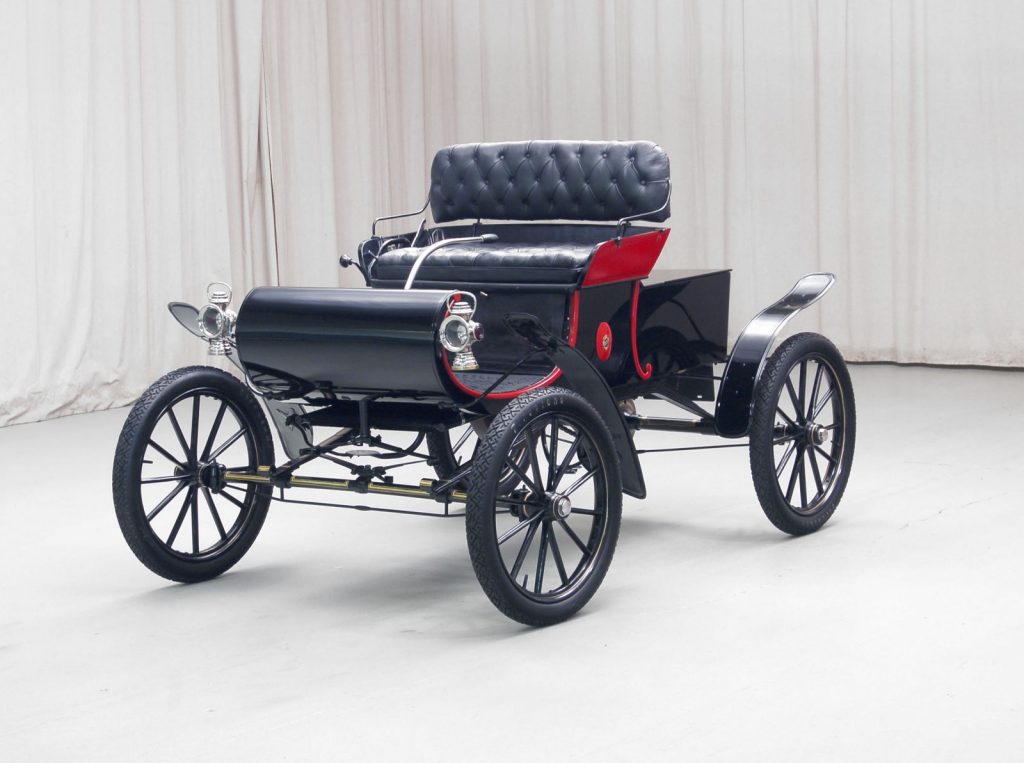
The advantage of drum brakes was that they were protected from aggressive environmental influences on their individual elements. The road in those days was far from ideal. Often, cars were exposed to severe bumps, dirt, water and dust. All these factors negatively influenced both the condition of the wheels and chassis, and the performance of the pads. Due to the fact that the mechanism was closed, it was protected from such influences. Also, the mechanism implied less effort on the part of the driver to stop the car (hydraulic modifications had not yet been developed).
Despite these advantages, the mechanism had a serious drawback - it did not cool well, and if braking was activated at high speed, this factor can lead to rapid wear of the friction linings. Even the first developments of drum brakes consisted of a large number of units (50) and a huge number of parts (200). This TS consisted of two circuits. The first (rear) was driven by a pedal, and the second (front drums) - by a hand lever. For the first time, the Isotta-Fraschini Tipo KM (1911) was equipped with such a braking system.
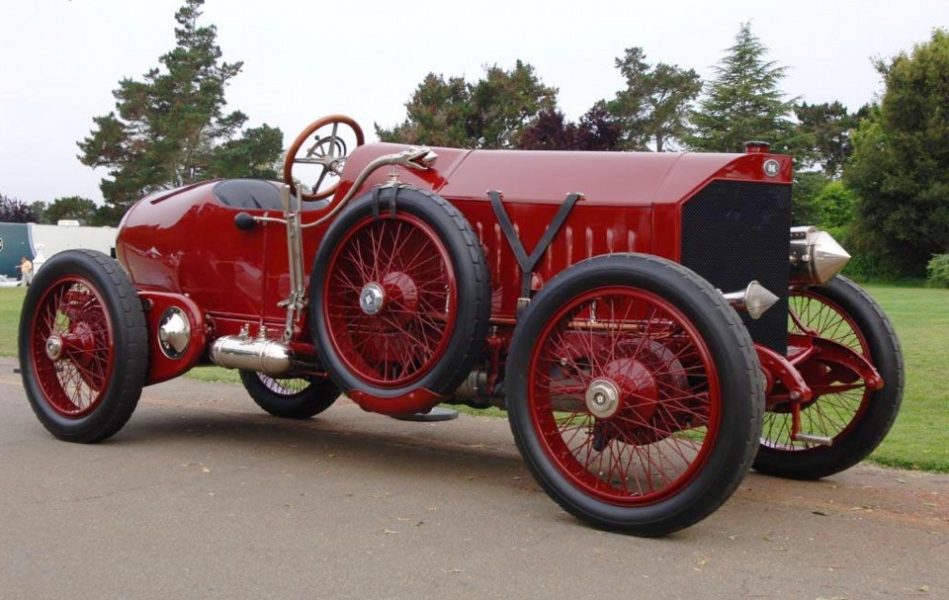
Several types of hydraulic systems were patented between 1917 and 1923. They are based on the principle of transferring forces from the main brake cylinder to the executive through the brake fluid (for details on what it is and what properties of this substance, read in another review).
After World War II, car manufacturers equipped their models with more powerful power units, which allowed vehicles to develop at ever higher speeds. An example of this is the 1958 Pontiac Bonnevile. Its 6-liter eight-cylinder internal combustion engine allowed it to accelerate to 210 km / h. Classic drum brakes broke down too quickly and could not cope with the increased load. Especially if the driver used a sporty driving style.
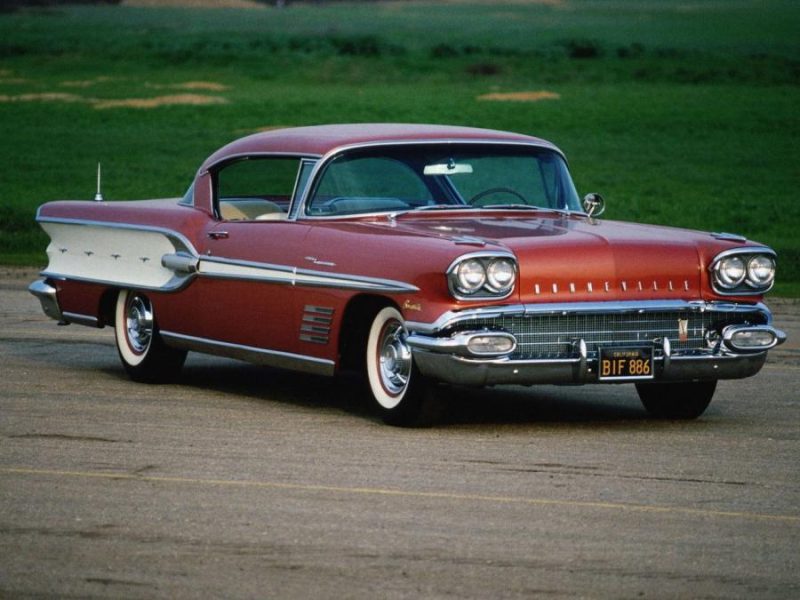
To make transport safe, disc brakes were used instead of drum brakes. Previously, this development was only equipped with racing, rail and air transport. This modification consisted of a cast iron disc, which was clamped on both sides with brake pads. This development has proven to be effective, which is why automakers equip premium and luxury models with just such brakes.
The difference between modern systems is that they use different components and designs of calipers (for details about what it is, what types are there and how they work, read separately).
More than 25 years ago, asbestos was used in braking systems. This material had good characteristics. Its peculiarity is that it is able to withstand high temperatures and strong friction, and this is the main load that the lining faces at the moment of firm contact with the brake disc. For hey reason, this modification has been popular for a long time, and few analogs could really compete with this product.
However, asbestos, which is part of the vehicle linings, has a significant drawback. Due to strong friction, dust formation cannot be completely eliminated. Over time, it has been proven that this kind of dust is very harmful to human health. For this reason, the use of such pads has dropped dramatically. Almost all manufacturers around the world have stopped making such products. Instead, a different organic material was used.
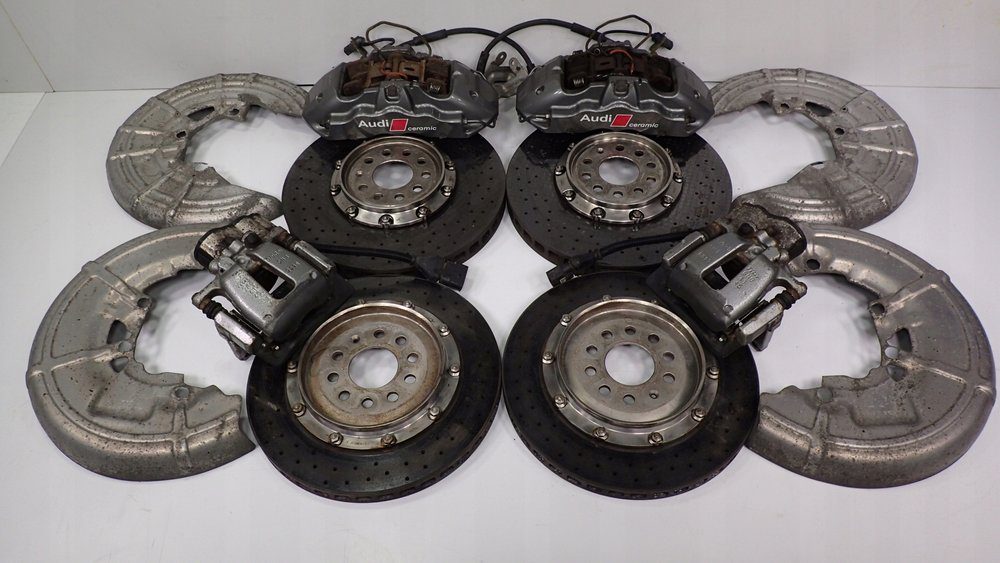
In the late 1990s, engineers at several car manufacturers began to consider ceramic as an alternative to asbestos. Today this material is used in premium braking systems, which are equipped with sports cars, as well as models with a powerful engine.
Features of ceramic brakes
To appreciate the characteristics of ceramic brakes, it is necessary to compare them with the classic equivalent, which is used by default in all cars.
Almost 95 percent of the brake pad market is organic. Depending on the manufacturing technology, up to 30 components can be included in the lining on the last, which are held together with an organic resin. Regardless of the mixture of which components a particular manufacturer uses, a classic organic brake pad will consist of:
- Organic resin. This material is capable of providing a firm hold on all components of the onlay. In the process of braking, the block begins to generate heat, the temperature of which can rise to 300 degrees. Because of this, acrid smoke begins to be released and the material burns. This condition significantly reduces the coefficient of adhesion of the lining to the disc.
- Metal. This material is used as a base for decelerating a rotating brake disc. Most often, steel is used for the manufacture of this element. This material does not wear out as quickly. This property makes a budget braking system effective. But it is also a key disadvantage of metal pads - intensive braking leads to rapid wear of the disc itself. The advantage of this material is its low cost and resistance to high temperatures. However, it also has several significant drawbacks. One of them is poor heat exchange with the brake disc.
- Graphite. This component is essential in all organic pads. This is because it reduces brake disc wear due to constant contact with the metal in the pads. But its amount should not exceed a certain percentage with the metal part. Pads that are too soft will form a strong coating on the rims. For more information on how to deal with it, read separately.

So, the features of organic pads include low cost, efficient operation at low speeds, brake disc safety with moderate brake use. But this option has more disadvantages:
- The presence of graphite deposits spoils the appearance of the rims;
- It is not recommended to drive fast and use the brake at the last moment, as due to the high temperature the pads can "float". In such situations, it is better to use engine braking, but the braking distance in this case, in any case, will be longer (for how this parameter is measured, read in another article);
- Frequent activation of the emergency brake accelerates disc wear, as the graphite quickly evaporates from the element, and the metal begins to rub against the metal.
Now for the features of ceramic brakes. First of all, ordinary ceramics should not be confused with this development. The technology by which these products are manufactured is also called powder. All the components that make up such a shoe are crushed into powder, so that they are all firmly connected to each other. This feature not only prevents quick wear of the pads with frequent use of the brake, but also does not form graphite deposits on the discs (this material is much less in the composition of ceramic brakes).
In addition to the percentage of graphite, these products also contain less metal. But instead of steel, copper is used in such pads. This material removes heat better when the brakes are heated. This feature will be practical for those motorists who are accustomed to driving according to the principle of "brakes were invented by cowards", therefore, they use them at the very last moment. Although we do not support this approach to vehicle handling, ceramic brakes can prevent some accidents that arise when the pads cannot handle heavy loads.
Another reason why ceramic pads use copper rather than steel is because of the softness of the metal. Due to this, the product does not deform during critical heating, which significantly increases the working life of the element.
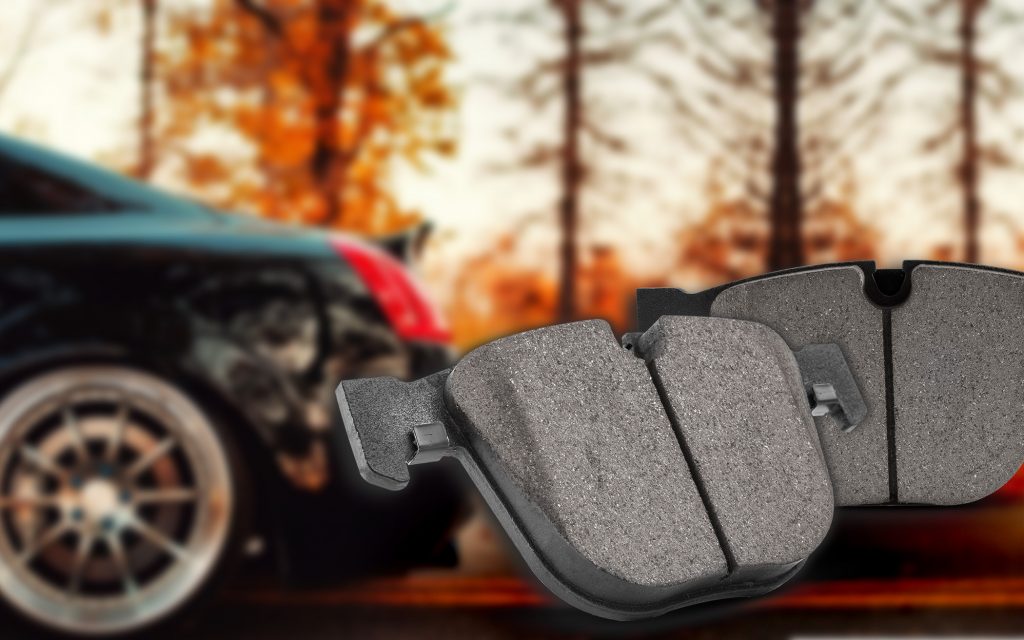
So, unlike organic matter, ceramics do not form dust, the coefficient of adhesion of the lining to the disc is much higher, which significantly reduces the braking distance of the car. At the same time, the system is able to withstand sufficiently high temperatures.
Differences between ceramic brakes
Here's a small table to help you compare organic pads with ceramic ones:
| Comparison parameter: | Organic: | Ceramics: |
| Dust generation | maximum | minimal |
| Life time | average | maximum |
| Warming up the disk | сильный | minimum |
| Natural wear of the disc | сильный | minimum |
| Creaking squeaks | average | Minimal |
| Maximum temperature condition | 350 degrees | 600 degrees |
| Efficiency | average | maximum |
| Price | low | high |
Of course, this table does not reflect the full picture of all braking systems that use ceramics or organics. A quiet ride with minimal braking at high speeds can extend the life of standard pads and discs. Therefore, this comparison is more about maximum loads.
The executive elements of the brake system include:
- Brake discs (one for each wheel, if the car is equipped with a fully disc vehicle, otherwise there are two of them in the front, and drums are used in the back);
- Pads (their number depends on the type of vehicle, but basically there are two of them per disc);
- Calipers (one mechanism per brake disc).
As mentioned earlier, the pads and discs become very hot during braking. To mitigate this effect, most modern braking systems are designed to be well ventilated. If the car is used under normal conditions, this airflow is sufficient for the brakes to do their job well.
But in more difficult conditions, standard elements wear out quickly and do not cope with their task at high temperatures. For this reason, vehicle manufacturing companies are introducing new materials that did not lose their frictional properties at high temperatures, and also did not wear out so quickly. Such materials include a ceramic pad, and in some types of vehicles also a ceramic disc.
During the manufacturing process, the ceramic powder is combined with powdered copper shavings under high pressure. This mixture is subjected to high-temperature treatment in a kiln. Thanks to this, the product is not afraid of strong heating, and its components do not crumble during friction.

In addition to these properties, the ceramic brake is capable of:
- Make less noise and vibrate less during vehicle activation;
- Provide a high coefficient of friction in much higher temperature conditions;
- Less aggressive action on the brake disc (this is achieved by replacing the steel alloy with copper).
Types of ceramic pads
Before choosing ceramic pads for your vehicle, it should be noted that there are several types of them. They are classified according to the riding style for which they are intended:
- Street - urban mode with increased loads on the braking system;
- Sport - sporty riding style. This modification is usually used on sports cars that can travel both on public roads and on closed tracks;
- Extreme - designed exclusively for extreme races on closed tracks, for example, drifting competitions (for more details about this type of competition, read here). Ceramic brakes in this category are not permitted on vehicles traveling on normal roads.
If we talk about the first type of pads, then they are great for daily use. The so-called “street ceramics” do not wear out the steel brake disc as much. They do not need to be preheated to ride. Track pads are effective after pre-heating, so they cannot be used for daily use. Because of this, the disc will wear out much more.

Here are some common myths regarding the use of ceramics in conventional cars:
- Ceramic pads are designed exclusively for sports cars, because a conventional brake disc paired with them wears out quickly. In fact, there are modifications adapted for use on conventional machines. These are amateur ceramic pads. When buying new consumables, it is necessary to clarify in what mode they will be used.
- The material from which the brake pad and disc are made must be identical. When developing this type of pads, the engineers tested them specifically on steel brake discs and adapted them for them.
- The ceramic pad will wear out the disc faster. Claims to the contrary are not a marketing ploy by automakers. The experience of many motorists confirms the fallacy of this statement.
- The reliability of the pads only shows itself under extreme braking. In fact, this modification retains its properties over a much wider temperature range. But conventional brakes in emergency situations can be more dangerous (due to overheating, they can stop braking). When properly selected, it will handle the load perfectly, depending on the riding style.
- The cost is too high. Although there is a difference in comparison with conventional pads, this difference is not so great that a motorist with an average material income cannot afford them. Given that this element has an increased working life, the end justifies the means.
Ceramics can be purchased if the driver applies the brakes frequently at high speeds. There is no need to install it on a conventional brake system, since conventional organic elements with a steel disc perfectly withstand urban mode and road driving at medium speeds.
Strengths of ceramic brake pads
If we consider the advantages of ceramic brakes, then the following factors can be distinguished:
- Ceramics wear less disc due to low abrasive composition. Fewer metal particles do not scratch the disc, thanks to which the product has a long service life. Naturally, the more often the elements of the braking system need to be changed, the more expensive is the car maintenance. In the case of ceramic pads, the scheduled maintenance of the brakes has an extended period.
- Ceramic brakes are much quieter. The reason for this is the low content of metal particles that scratch the surface of the disc.
- Increased operating temperature range. Products can withstand temperature rise up to 600 degrees and rapid cooling, but at the same time they do not lose their properties. Track type pads have this parameter even more.
- Less dust is generated. Thanks to this, the motorist does not need to purchase means for cleaning wheel rims from graphite deposits.
- They quickly reach the required temperature regime. This ensures that braking performance is not compromised when the pedal is depressed again.
- With strong heating, the pads do not deform, which eliminates the need for frequent vehicle repairs.

Ceramic brake pads are used successfully not only in sports cars. This modification has proven itself well in the brake systems of trucks.
Cons of ceramic brake pads
Compared to the positives, there are much fewer disadvantages of ceramic for brakes. For example, one of the parameters that some motorists rely on when choosing the ceramic version is the absence of dust. In fact, this is not entirely true. In the process of rubbing the pads against the disc, they will definitely wear out, which means that dust is still formed. It's just that there is not such a large amount, and even on light discs it is not so noticeable, because it contains much less or no graphite at all.
Some motorists, choosing replacement parts, proceed only from the price of the product. They think: the higher the cost, the higher the quality. This is often true, but it is not the main parameter to rely on. So, if you select the most expensive ceramics, there is a high probability that a version for a sports car will be purchased.
Fitting to a standard vehicle that is normally used will be of little benefit, and in some cases may even cause an accident, as professional pads need to be preheated before they reach maximum efficiency. For this reason, you should carefully select parts, starting from the conditions in which they will be used.
Hack and predictor Aviator
So, as you can see, ceramic brakes are more reliable and efficient than classic pads. Many motorists opt for this particular product. However, one should also take into account how much stress the driver usually places on the braking system.
Correctly selected brakes can improve the safety of transport in a busy traffic, as well as reduce the frequency of replacing the pads during heavy braking. Another important factor is that you should choose only products from trusted manufacturers.
In conclusion, we suggest watching a few video tests of ceramic brakes:
Questions and answers:
Why are ceramic brakes better? Great for aggressive riding. They are able to withstand heating up to 550 degrees without loss of efficiency. Low dust and noise. Do not damage the disc.
How to distinguish ceramic brakes? The type of pads is indicated on the packaging. Unless otherwise noted, they are at high operating temperatures. They cost much more than regular pads.
How long do ceramic pads last? Compared to conventional pads, such pads are much more durable (depends on the frequency of sudden braking). Pads care for from 30 to 50 thousand with frequent braking.
